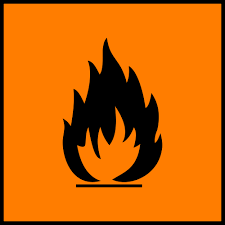We all hope that we will never need to read a Guide to Solvent Abuse but after attending a course at the local Children’s Centre I realised how important it is to be aware. Curly is of course only 8 and Baby Bean 19 mths now so I don’t suspect they are having anything to do with solvents but it COULD happen to ANY FAMILY, ANY CHILD! So my theory is better to know the signs too early than too late.
What follows below are the handouts which we were given on our course. It has been thoroughly researched so please take this seriously.
What is VSA?

Volatile Substance Abuse
Solvent Abuse is defined as:
The deliberate inhalation of a gas or fumes given off at room temperature from substances for its intoxicating effect.
Short-Term Effects
- Depression of breathing
- Frequent headaches
- Mood swings
- Cardiac arrhythmia
- Anoxia – low oxygen in the blood levels
- Cerebral depressant
- Conjunctivitis
- Cough
- Hangover symptoms
Death can occur due to the following:
Heart Failure
This is when the heart becomes oversensitive to adrenaline and beats ineffectively. If the “sniffing” is followed by exertion or excitement, the heart can’t cope and stops. Some aerosol sprays freeze the organs, which can result in the lungs and airways producing fluids – this carries serious additional risks.
Choking
There is also a risk of choking on vomit, caused when the body is trying to get rid of unwanted substances. However, if someone is unconscious after inhaling a solvent, the person’s airways are likely to become blocked, which could suffocate him or her to death.
Accidents – Fatal or Serious
Accidents can occur when someone is “high” or hallucinating. A user may imagine that he or she can jump from great heights, or stop a speeding train. Someone inhaling alone could drown if falling into the water. Many deaths result from suffocation because the solvents are inhaled from plastic bags. There is also the risk of burns, as many of these products are highly flammable and can explode.
Recent History
Late 1940’s First known outbreak of Gasoline sniffing in the USA
1950’s Reports of deliberate inhalation of Gasoline fumes in the USA, Australia, India and UK
1968 29 countries passed Anti Glue sniffing legislation
1970’s Punk era – solvents widely used
1983 Statistics were not collected until now in any uniform way
2005 Statistics suggest no reported change in the amount of solvent-related deaths over the past 20 years
Young people who have been offered individual drugs, by age
| Type of Drug | 11 years | 12 years | 13 years | 14 years | 15 years |
| Total Cannabis | 4% | 8% | 19% | 37% | 52% |
| Ecstasy | 1% | 2% | 5% | 10% | 17% |
| Heroin | 1% | 3% | 6% | 7% | 9% |
| Cocaine | 2% | 4% | 7% | 10% | 16% |
| Amphetamines | 1% | 2% | 4% | 10% | 16% |
| Volatile Substances | 7% | 9% | 15% | 19% | 21% |
Figures from a Dept of Health Research Document March 04 (10,000 pupils – 313 schools)
Methods of Solvent Abuse Are Known As

Sniffing or Snorting
Breathing in a substance directly from its container
Huffing
Placing a rag soaked in the substance over the nose and mouth and inhaling. For example, a scarf worn around the neck, socks, towels, ties, toilet rolls, clothing.
Bagging
Pouring the substance into a plastic bag/bottle and breathing in the fumes
Why use VSA?
- Solvents, unlike other drugs, are legal
- Aren’t physically addictive
- Thrills and pleasure
- Large surface areas of the lungs mean the effects reach the brain faster
- Experimentation
- Peer pressure/influence
- Medicinal
- Depression
- Accessibility
- Boredom
- To shock
- Not seen as a drug
- Casual use
- Away from the family
- On holiday
- It’s free/cheap
- Trauma
- At a party
- To be different
- With family members
- To be the same
- Social activity
- Relationship to drug abuse
- Nothing else
- No drugs available
- The effects/toxicity
- Dangers unknown
Immediate Effects of Solvent Abuse
| · Runny eyes & nose · Spots/sores around the mouth · Smelly breath · Blackout · Difficulties breathing · Feeling sick · Chronic headache · Euphoria · Blurred Vision · Inhibitions lowered · Numbness | · Accidents · Vagus nerve damage (Vaso-Vagal) · Hallucinations · Drowsy · Light headed · Acting drunk/drunkenness · Buzzing in the ears · High · Clumsy/uncoordinated · Death |
Hallucination
Hallucinations are abnormal sensory perceptions that occur whilst a person is awake and conscious. Some common hallucinations are hearing voices when no one has spoken, seeing patterns, lights, beings or objects that aren’t there, or feeling a crawling sensation on the skin. Hallucinations related to smell or taste are rare.
Withdrawal
Tolerance to a substance may develop but psychological and physical withdrawal symptoms have only been found in a few cases. Withdrawal symptoms may include:
- Lack of sleep
- Stomach cramps
- Irritability
- Facial “ticks”
- May take weeks to occur or subside
Long-Term Damage
Volatile substances are absorbed by the fatty tissue and certain products if used every day can damage:
- The brain
- Optic nerve
- Nervous system (peripheral)
- Liver
- Kidney
- Lungs
- Testicles
- Hearing
- Mental health
Some signs and symptoms of VSA use are:
- The chemical smell on clothing, hair and breath;
- Empty or damaged butane gas, aerosol or glue containers
- (look for teeth marks on nozzles, towels with white marks on, bags containing glue etc);
- The disappearance of aerosols, glues etc from around the home;
- “drunken” behaviour, such as lack of coordination and coherence;
- Changes in sleep patterns;
- Changes in appetite;
- Changes in behaviour, e.g. tiredness, irritability, aggressiveness, mood swings;
- Changes in school performance;
- Changes in health, e.g. headaches, tummy aches, conjunctivitis, cough.
Products used
- Aerosols/air fresheners
- Nail varnish and nail varnish remover
- Dry cleaning agents
- Paint thinners
- Paints/lacquers
- Butane gas cigarette lights refill
- Thinners and removers
- Degreasing products
- Pain relief spray
- Antithetic gases
- Petrol
- Liquid petroleum gas (LPG)
- Halon (BCF) fire extinguishers
- Toluene
- Some typewriter correction fluids
- Deodorant aerosols
- Solvent-based adhesives
- Some shoe and metal polish
- Hairspray
It is difficult to list them all but in the average household, there are up to thirty products. These can be defined by four main groups:
- Solvents
- Aerosols
- Anaesthetics
- Nitrates
Warning signs on products help you spot the dangerous ones
Pressurised Gases
Most aerosols and all forms of liquefied petroleum gas will carry some form of warning such as “Flammable”, “Do not puncture or incinerate”, “Do not use near fire or flame, etc”.
Flammable Liquids
Usually, forms of liquids in metal containers or bottles all will bear highly flammable and in the UK must display a Black Flame on an Orange Background.
Non Flammable Substances
May not be flammable but hints can be gained from the products themselves. Look out for the following chemicals:-
- Trichloroethylene
- Dichloromethane
- Tetrachloroethylene
The Law
Volatile Substance Misuse is not illegal
The Intoxicating Substances Supply Act of England and Wales makes it an offence to supply any product to anyone under the age of 18.
Supplying anyone if it is believed or known that the product is being used to get high the penalty is a £5,000 fine and six months in prison.
You might find this Addiction resource helpful if you are living in the US.



